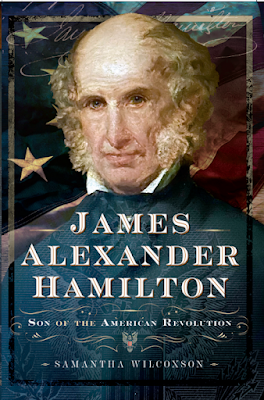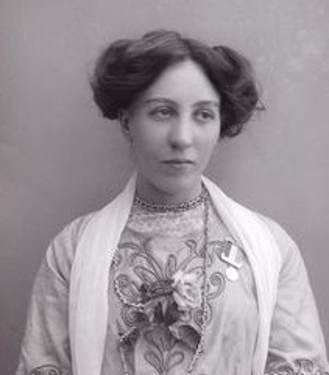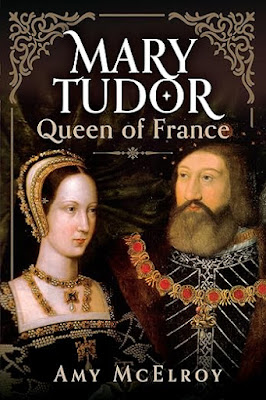8 April 2025
Blog Tour Excerpt: Ghost Encounters: The Lingering Spirits Of North Devon, By Helen Hollick
5 April 2025
Book Launch Spotlight: Kingbreaker (III): The Red Rose, by David Pilling
A Special Guest Post by Katharine Edgar: Kentwell Hall, Where Time Travel Dreams Come True.
Deep in a woodland in Suffolk, a sixteenth century glass kiln blazes. Around the kiln long-skirted women and men dressed in hose carefully heat blobs of glass at the end of long pipes. They blow, turn and shape them until new-made vessels emerge. It is a magical, ancient process.
In actual fact, of course, there are no Cloptons at Kentwell. The house belongs to retired lawyer Patrick Phillips and his wife Judith, and the Tudor folk are volunteers. Patrick bought the house in 1971. This was a courageous act: the house, if not quite ruined, was thought by many to be beyond saving.
Since then he and Judith have devoted themselves to gently coaxing the building back to life and creating a fabulous garden full of enchantment and curiosity. The re-creations were conceived after the couple visited a historic chateau in France where volunteers wore costumes, but were only pretending to weave, cook and make pots. At Kentwell it would be done for real. They advertised for participants. ‘Live as a Tudor!’ read the notice in the Guardian back in the 1970s. Volunteers learned to make costumes, adopt early modern speech patterns, and began a deep dive into researching and re-learning forgotten past skills.
For several decades, the Tudor re-creations were a staple of school trips for children across south-east England. Easily reachable by road from London and running for three weeks in the summer the events were visited by schools during the week and the public at weekends.
The largest of the Tudor re-creations will take place this year for a week in late June and two in August. These feature more than two hundred Tudors and are the opportunity to see some of the more spectacular crafts, such as glass blowing, but all the Tudor events feature an astonishing range of sixteenth century activities from archery to alchemy.
Many members of the public come back repeatedly, returning every year or even several times to the same event. Some volunteers have been coming since the 1980s. What is it that evokes such loyalty in visitors and participants?
For the Kentwell Tudors, it is a chance to be part of a community of creative people of a variety of ages and backgrounds who share the desire to know more about history and yearn to experience the past. They also get to spend time in a place that, with its shimmering moat, can be heart-breakingly beautiful in the dawn silence. Up its three quarter mile lime avenue it stands apart from the modern world.
The modern world, of course, is one where more and more of our lives are digital and the term ‘immersive’ is most often used for an audio-visual experience. But at Kentwell the immersion visitors undergo is a real, sensory one, with no digital projections or laboratory-created chemical scents, let alone anything generated by artificial intelligence. Reality means messiness and failures. Kilns have collapsed and bread burned. Reality means risk, drama, and as every writer of fiction knows, this engages.
Every year the Tudor year is a different one, and this year it will be 1536. The re-enactments will begin with Easter, on Good Friday. At the May Day weekend there will be a mummers’ play (will St George’s dragon breathe fire?) and a chance to join in the dancing. In midsummer and August the glass blowers will discover whether the new kiln they have been building this last weekend works, and by Michaelmas the harvest will be in and the spring lambs grown. The Cloptons might discuss politics. There is a new queen this year. And Thomas Cromwell’s influence grows ever stronger….
Kentwell’s 1536 Easter re-creation runs from 18th - 21st April 2025.
For further event dates, and to book, please visit https://www.kentwell.co.uk
Katharine Edgar
# # #
About the author
Katharine Edgar first visited Kentwell Hall in 1982. It sparked an interest in history which led to a career teaching Museum Studies at university and writing historical fiction. Her first historical novel, Five Wounds, set in the north of England during the Pilgrimage of Grace, is available on Amazon and her writing can also be heard as part of the immersive (in the modern sense!) Shakespearean Memory Parlour project at https://middlingculture.com. A re-enactor who specialises in textile work, she recently took part in the ‘total immersion’ Candlemas 1461 event at the Weald and Downland Museum with Black Knight Historical, living 24 hours a day in a house with no window glass in the depths of winter. Follow Katherine on Bluesky @katharineedgar.bsky.social and find Kentwell Hall @kentwellhall.bsky.social4 April 2025
Blog Tour Guest Post ~ The Tudor Queens’ Midwife, by Brigitte Barnard
1 April 2025
Book Launch Spotlight - Wild Scottish Gold (The Enchanted Highlands Book 7) by Tricia O'Malley
30 March 2025
Book Launch Guest Post by Samantha Wilcoxson, Author of James Alexander Hamilton: Son of the American Revolution
I decided to write about James Alexander Hamilton during my research for a previous book. Women of the American Revolution included a chapter on James’s mother, Elizabeth Schuyler Hamilton, and I found his Reminiscences to be a fantastic resource. It also included so much more than some personal insight into Hamilton family life. I discovered that James had been an observant and active witness to seventy-five years of turbulent US history.
James was born in 1788, the year of the Constitutional Convention, and lived through the American Civil War to publish his Reminiscences in 1869. Throughout these years, James was connected with many of the people whose names we remember today, such as John Quincy Adams, Andrew Jackson, and Abraham Lincoln. He followed in his father’s footsteps, studying to become a lawyer who was deeply concerned with constitutional and banking issues.
In 1829, James served as temporary secretary of state for Andrew Jackson, which has caused some historians to label him an anti-banking Jacksonian. In fact, James left behind stacks of correspondence encouraging Jackson to reform the national bank where necessary but practically begging him not to dismantle it. James warned the president of the financial panic that would – and did – occur when Jackson defunded the national bank.
Besides advising presidents and cabinet members, James was involved in the New York Crystal Palace, fighting New York’s Great Fire of 1835, and was a part of the crew that won the first America’s Cup. I felt like I was constantly discovering unique experiences and participation in historic events when researching James’s life!
James was in his seventies when the Civil War broke out, an occurrence that he blamed on the incompetence and inaction of President James Buchanan. Despite his age, James offered to put on a uniform and die honorably on the field of battle. Instead, his country asked him to serve on a board that advised President Abraham Lincoln, which James was happy to do. He even wrote a draft of the Emancipation Proclamation.
I felt like I became friends with James through the writing of this biography and wish his Reminiscences included more from the post-war years. The country could have still benefitted from his wise counsel, but age caught up with the man who had strived to continue the work of his legendary father. James died in 1878, and is buried in Sleepy Hollow, a cemetery made famous by James’s friend and neighbor, Washington Irving.
Samantha Wilcoxson is an author of emotive biographical fiction and nonfiction featuring history’s unsung heroes. Her first fiction series tells stories of early Tudor women, beginning with Elizabeth of York, but she has explored other eras as well. Samantha's Luminous features real life radium girl Catherine Donohue and has won several awards for its compelling, poignant storytelling. She has also written both fiction and nonfiction set during the American Revolution. Today, Samantha is excited to share her new biography of James Alexander Hamilton published by Pen & Sword History. Samantha and her husband of almost thirty years split their time between Michigan and Florida, and they love exploring historic places together. They have three adult children, who love to gather for family time at the lake. Samantha is currently writing a Wars of the Roses trilogy for Sapere Books and looks forward to returning to the era that first inspired her to write. Find out more from Samantha's website https://samanthawilcoxson.com anf find her on Instagram and Facebook
28 March 2025
Historical Fiction Spotlight: Oscar's Tale, by Chris Bishop
Book Review: The Midnight of Eights, by Justin Newland
27 March 2025
Guest Post by Rosemary Hayward, Author of Strait Lace, A Loxley Hall Book
Weakness to be wroth with weakness! woman's pleasure, woman's pain—Nature made them blinder motions bounded in a shallower brain:Woman is the lesser man, and all thy passions, match'd with mine,Are as moonlight unto sunlight, and as water unto wine—
23 March 2025
Notes of a Time Traveller, a Special Guest Post by Lucy Menadue
21 March 2025
Book Launch Spotlight: The Wartime Chocolate Maker, a World War 2 novel by Gosia Nealon
Working in her father’s chocolate factory, Kasia risks her life every day hiding notes vital to the Polish resistance in the carefully packaged boxes. The information tucked beneath the truffles is crucial to freeing her country and her family from the Nazis. But each of her recipes is sent out under the watchful eyes of her boss, Sebastian—the man who broke her heart.
She has never been able to reconcile the kind, sweet boy she once adored with the man now allied with the Germans. Yet the more time she spends around him, the more he seems to hint at sympathizing with the resistance. And the risk of revealing everything to him seems to shrink day by day.
Until one coded message hidden among the rich chocolate makes her fear for her mother and brother’s lives. And though she’s on the factory floor with a group of fellow resistance women, she can’t let on what she knows. Because her network has been betrayed.
As she searches the faces of those closest to her for any sign of guilt, her eyes meet Sebastian’s, full of care and concern. With time running out, Kasia wonders if she can trust him with this deadly secret? Or are the soldiers already on their way to arrest her?
19 March 2025
The Rune Stone, A haunting time-slip mystery of ancient runes (Dr DuLac series Book Three), by Julia Ibbotson
She, once again, feels the echoes of the past resonate through time and into the present. Can she unlock the secrets of the runes in the life of the 6th century Lady Vivianne and in Viv’s own life?
Again, lives of the past and present intertwine alarmingly as Viv desperately tries to save them both, without changing the course of history.
“Dr Ibbotson has created living, breathing characters that will remain in the reader’s mind long after the book is read … The characters are brought to life beautifully with perfect economy of description … fabulous!” – Melissa Morgan
“A rich and evocative time-slip novel that beautifully and satisfyingly concludes this superb trilogy. The story is woven seamlessly and skilfully between the past and the present and the reader is drawn deeply into both worlds. Her portrayal of the 6th century and its way of life are authoritative, vivid and memorable.” – Kate Sullivan
18 March 2025
Book Review: Mary Tudor: Queen of France, by Amy McElroy
# # #
Amy enjoys seeing her family back in Liverpool, especially her little furry assistant in the form of cavapoo Cooper, and visiting her dad in Spain, especially in the summer. You can find out more about Amy at her blog - https://amymcelroy.blog/ and follow her on Facebook and Twitter @AmyMc_Books




.jpg)





























